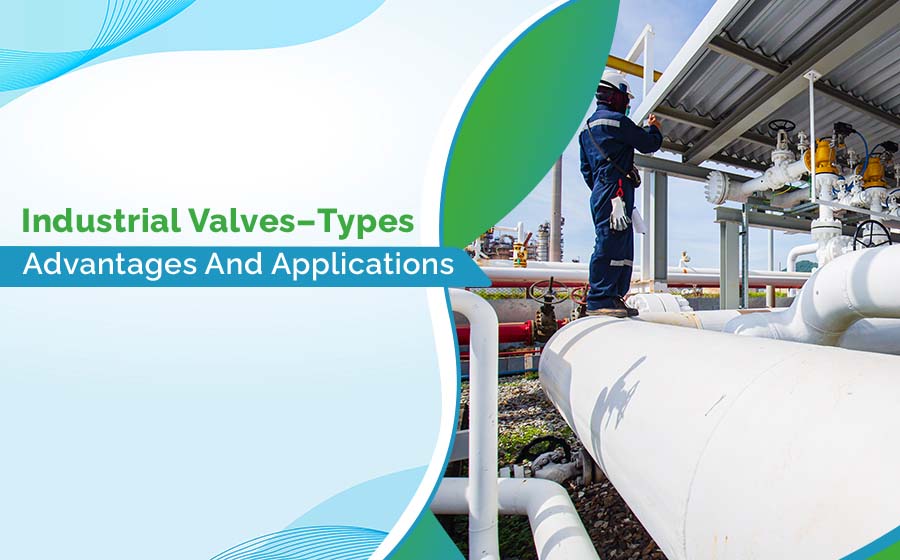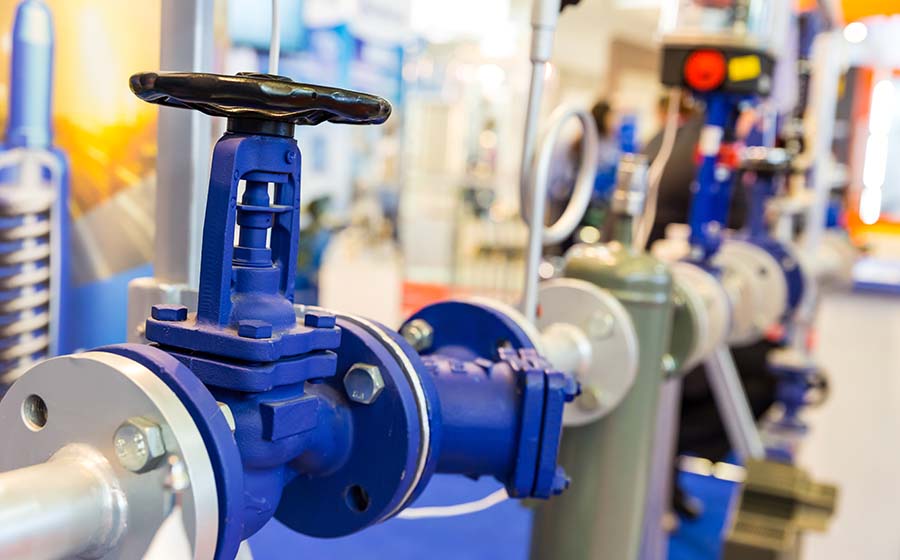
Industrial Valves – Types, Advantages, And Applications
Industrial Valves have a major market share and the total revenue in this particular segment is expected to surpass $77 billion by 2022. The demand for industrial valves has seen a steady increase over the years with the implementation of computer aided valve designing and their application in more fields like commercial construction projects, automation projects, and so on. Industrialization is also not expected to see any slowdown in the near future bringing bright prospects for the industrial valve business.
Euroindustriel is a market leader in the procurement and supply of industrial valves, and we collaborate closely with our customers to provide a viable approach for their valve design and delivery needs. Every project, whether automated or manual, requires a dedicated department for industrial valve design. Industrial valve design has progressed significantly over the years, and AI and Machine Learning are now being used to design industrial valves for increased accuracy and output.
Different types of industrial valves and their application
Industrial valves come in a variety of shapes and sizes, each with its own function. Some regulate the flow of materials, while others automate a certain process in the plant. Valves regulate the movement of liquids, gases, and slurries via pipes and passageways. They are designed to open, close, or partially block these openings and closings. Every time a new function is introduced to the plant, new valves must be designed. With industrial valves, there is no such thing as a “one size fits all” principle.
These are the most common types of industrial valves and their industrial applications –
1. Gate Valves

Gate valves are primarily uses as isolation valve. The flow of liquid via the pipes is controlled by these valves. Gate valves are used to control the flow of water by stopping or releasing it.
Applications: Gate valves are ideal for high-temperature and high-pressure applications. They’re mostly used in on-off situations.
2. Globe Valves
Globe valves are extensively employed because they can be utilized in a wide range of applications. Similar to gate valves, these valves throttle flow via linear motion. They alter the position of a moveable disk (or plug) in relation to a stationary ring seat to control the flow of a pipeline. The fundamental advantage of a globe valve is that it does not leak as much as other valves.
Applications: Throttling is the primary function of global valves. They can be thought of as general-purpose flow control valves with a high-temperature application.
3. Ball Valves

Ball valves control the flow of fluids from one opening to the next by using a ball. These valves govern the flow of gas or liquid by permitting the opening to be open, blocked, or partially open.
Applications: Ball valves are the best choice for use with gases since they have a superior seal. They can withstand pressures of up to 700 bar and temperatures of up to 200°C, and their sizes typically range from 0.5 cm to 30 cm. Since they have a simple structure, they are simple to use and repair.
4. Butterfly Valves

Butterfly Valves are intended to control flow but have limited control capabilities. Butterfly valves can be opened and closed by turning a handle 90 degrees. In the closed position, it consists of a metal disc in the valve’s body that is perpendicular to the flow. Intermediate rotations can be used to control the flow of liquid. Butterfly valves are available in three different configurations: electronic, manual, and pneumatic.
Applications: They have a wide range of applications in water supply, wastewater treatment, fire prevention, and gas supply, as well as in the chemical and oil industries, fuel handling systems, and power production, among others. Butterfly valves are commonly utilized in the pharmaceutical, chemical, and food processing industries. They’re designed to handle corrosive liquids at low temperatures and pressures.
5. Check Valves

Check valves, also known as Non-return valves are (NRV), only allow liquid to flow in one way and prevent media from flowing in the opposite direction. Check valves are used to prevent process flow in the system from reversing, which could damage equipment or disrupt the process. They’re typically used to prevent liquid pumps and gas compressors from backflow, which could cause the pump or compressor to shut down. A check valve’s fundamental design prevents backflow in a line.
Applications: Because of their simple design and wide range of material possibilities, check valves are employed in a wide range of markets and applications. They aid in the prevention of backflow and the maintenance of pressure. Check valves are used in a variety of sectors, including refining, petrochemical, chemical, and oilfield operations, as well as water, steam, refining petro, and viscous fluids. They’re also common in industry and waste-water management systems.
Valves in Non-Industrial Applications
Valves are used in a variety of non-industrial applications too. Valves used in home applications, such as a faucet or an outside hose, or in medicine, such as a heart valve, are just a few examples.
Euroindustriel is the global partner to your business in procurement and supply of all industrial needs in one place. When you choose Euroindustriel, you are choosing an expert who can offer useful insights into finding the most appropriate valve application to make your project a success, thanks to our extensive product suite on industrial valves. Call us, or just send a message on Whatsapp, and let’s together plan and execute your next project to achieve excellence beyond cost savings.















